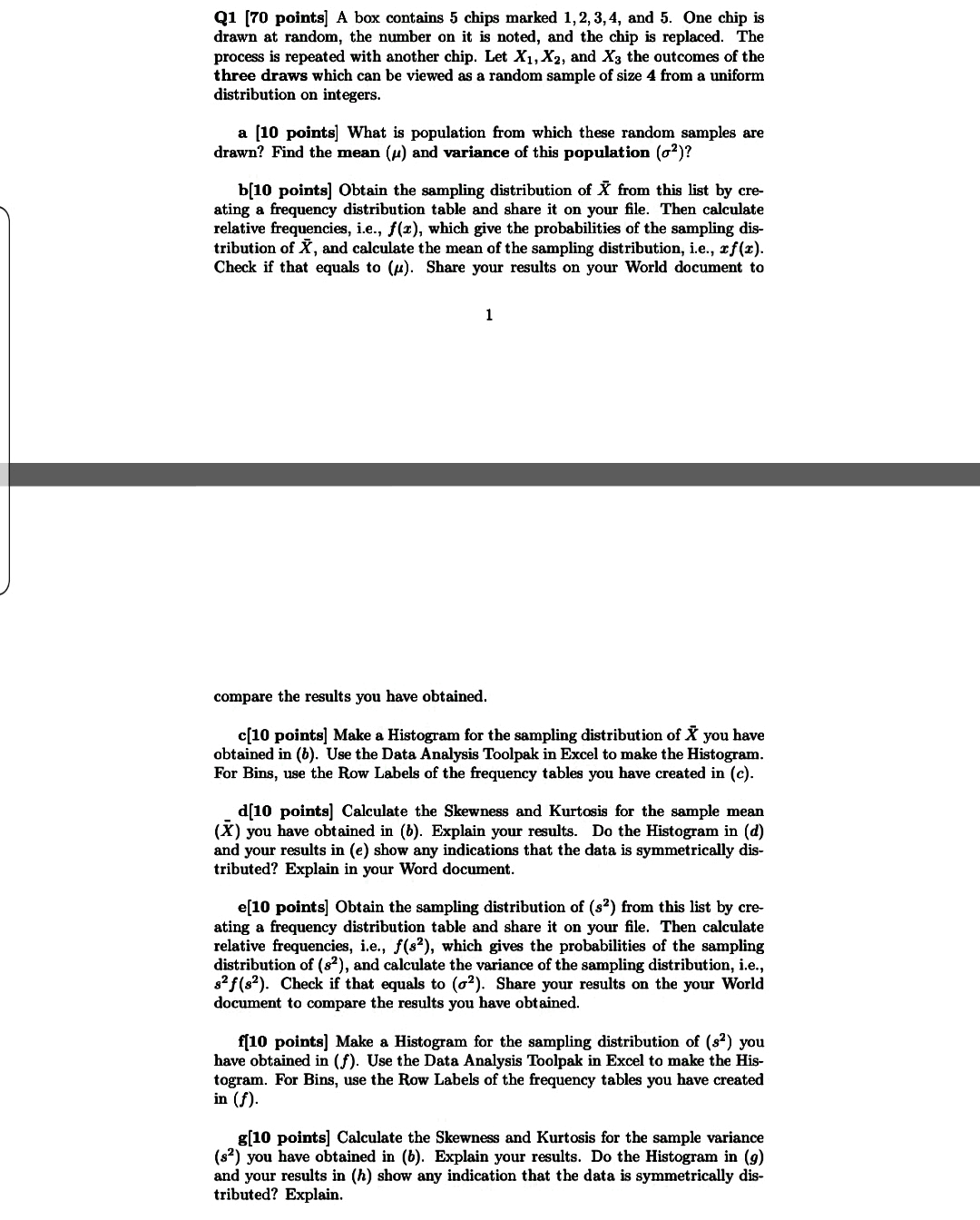Q1 [70 points] A box contains 5 chips marked 1, 2, 3, 4, and 5. One chip is drawn at random, the number on it is noted, and the chip is replaced. The process is repeated with another chip. Let X1, X2, and X3 the outcomes of the three draws which can be viewed as a random sample of size 4 from a uniform distribution on integers. a [10 points] What is population from which these random samples are drawn? Find the mean (/) and variance of this population (oz)? b[10 points] Obtain the sampling distribution of X from this list by cre- ating a frequency distribution table and share it on your file. Then calculate relative frequencies, i.e., f(x), which give the probabilities of the sampling dis- tribution of X, and calculate the mean of the sampling distribution, i.e., If (I). Check if that equals to (#). Share your results on your World document to compare the results you have obtained c[10 points] Make a Histogram for the sampling distribution of X you have obtained in (b). Use the Data Analysis Toolpak in Excel to make the Histogram. For Bins, use the Row Labels of the frequency tables you have created in (c). d[10 points] Calculate the Skewness and Kurtosis for the sample mean (X) you have obtained in (b). Explain your results. Do the Histogram in (d) and your results in (e) show any indications that the data is symmetrically dis- tributed? Explain in your Word document. e[10 points] Obtain the sampling distribution of (s') from this list by cre- ating a frequency distribution table and share it on your file. Then calculate relative frequencies, i.e., f(s?), which gives the probabilities of the sampling distribution of (s?), and calculate the variance of the sampling distribution, i.e., s2f(s?). Check if that equals to (?). Share your results on the your World document to compare the results you have obtained. [10 points] Make a Histogram for the sampling distribution of (s?) you have obtained in (f). Use the Data Analysis Toolpak in Excel to make the His- togram. For Bins, use the Row Labels of the frequency tables you have created in (f). g[10 points] Calculate the Skewness and Kurtosis for the sample variance (s?) you have obtained in (b). Explain your results. Do the Histogram in (9) and your results in (h) show any indication that the data is symmetrically dis- tributed? Explain







